Introduction
Cabbage and vermicelli stew, a humble yet deeply satisfying dish, has graced dining tables across cultures for generations. Rooted in the hearty traditions of Northern Chinese cuisine, this one-pot wonder combines the earthy sweetness of cabbage, the chewy resilience of vermicelli noodles, and the savory depth of aromatic spices. While its simplicity might suggest it’s effortless to prepare, achieving the perfect balance of textures and flavors requires attention to detail. This article will guide you through the nuances of crafting this dish, from selecting the finest ingredients to mastering the cooking technique. Whether you’re a novice cook or a seasoned home chef, you’ll discover how to elevate this comfort food into a culinary masterpiece.
The Foundation: Ingredients and Their Roles
Every great dish begins with quality ingredients, and cabbage stew is no exception. Let’s break down the key components:
-
Cabbage: Opt for a firm, green cabbage with crisp leaves. Avoid wilted or overly soft heads, as they may release excess moisture during cooking, leading to a soggy stew. The cabbage’s natural sweetness and mild bitterness form the dish’s backbone.
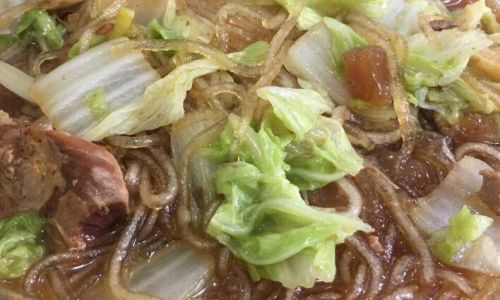
-
Vermicelli Noodles: Choose glass noodles made from sweet potato or mung bean starch. These varieties absorb flavors without becoming mushy. Soak them in warm water for 15–20 minutes before cooking to ensure even softening.
-
Protein (Optional): Ground pork, diced tofu, or shredded chicken add richness. For a vegetarian twist, use textured vegetable protein (TVP) or mushrooms.
-
Aromatics: Fresh garlic, ginger, and scallions are non-negotiable. They infuse the stew with fragrant, pungent notes that cut through the cabbage’s density.
-
Soy Sauce and Oyster Sauce: These umami-rich condiments add depth. Opt for light soy sauce to avoid overpowering the dish’s subtlety.
-
Broth: Use homemade chicken or vegetable stock for superior flavor. If store-bought, select a low-sodium variety to control saltiness.
-
Oil: A neutral oil like vegetable or peanut works best. For added richness, a touch of sesame oil at the end enhances aroma.
Preparation: The Devil Is in the Details
Before lighting the stove, meticulous prep ensures smooth cooking:
-
Cabbage Prep: Remove the core and slice the cabbage into 1-inch strips. Rinse and drain thoroughly—excess water dilutes flavors.
-
Vermicelli Soaking: As mentioned, soak noodles until pliable but not brittle. Over-soaking leads to breakage; under-soaking results in hard centers.
-
Protein Prep: Marinate ground pork with soy sauce, white pepper, and a pinch of sugar for 10 minutes. This tenderizes the meat and deepens its flavor.
-
Aromatics: Mince garlic and ginger finely; chop scallions into ½-inch segments, separating whites (for cooking) and greens (for garnish).
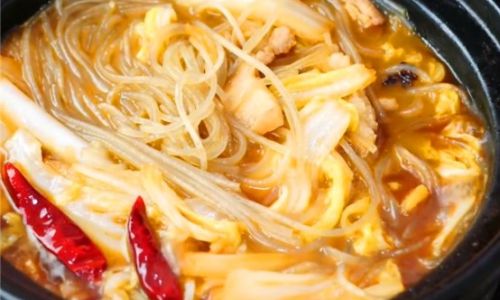
Cooking Technique: Layering Flavors
The magic of cabbage stew lies in its layered flavors, achieved through strategic cooking steps:
-
Sear the Protein (If Using): Heat a wok or deep skillet over medium-high heat. Add oil, then the marinated pork. Stir-fry until browned but not crispy. Remove and set aside.
-
Sauté Aromatics: In the same pan, add a touch more oil. Toss in garlic, ginger, and scallion whites. Stir-fry until fragrant (30 seconds), taking care not to burn the garlic.
-
Cook the Cabbage: Add cabbage to the pan with a pinch of salt. Toss to coat in oil, then let it wilt slightly (2–3 minutes). The salt draws out moisture, concentrating flavor.
-
Deglaze and Simmer: Pour in broth (1–2 cups, depending on desired stew consistency). Scrape up any browned bits from the pan. Return the pork to the pot, then add soy sauce, oyster sauce, and a dash of white pepper. Bring to a simmer.
-
Add Vermicelli: Gently nestle the noodles into the stew, ensuring they’re submerged. Cover and cook on low heat for 8–10 minutes, stirring occasionally to prevent sticking.
-
Adjust Seasoning: Taste and adjust with salt, pepper, or a drizzle of sesame oil. The stew should be savory with a hint of sweetness from the cabbage.
Troubleshooting Common Pitfalls
Even seasoned cooks encounter hiccups. Here’s how to fix them:
-
Soggy Noodles: Overcooking is the culprit. Remove the stew from heat once noodles are tender but still chewy.
-
Bland Flavor: Add a splash of rice vinegar or a pinch of sugar to brighten the dish. A final drizzle of chili oil can also elevate complexity.
-
Greasy Texture: If using pork, ensure it’s well-drained before adding. For vegetarian versions, use minimal oil and rely on broth for richness.
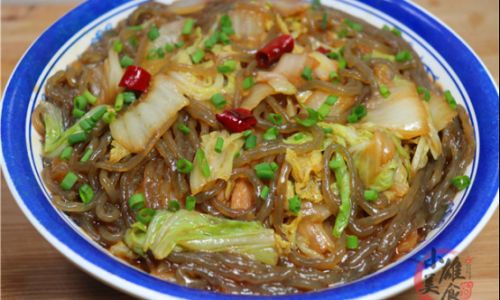
Customization: Making It Your Own
The beauty of cabbage stew lies in its adaptability. Experiment with:
-
Vegetables: Add shredded carrots, bell peppers, or mushrooms during the cabbage-cooking step.
-
Spices: A teaspoon of Sichuan peppercorns or a star anise pod imparts warmth. For heat, toss in dried chili flakes.
-
Protein Swaps: Try shrimp, beef, or even tempeh for a plant-based twist.
-
Herbs: Garnish with cilantro, basil, or thinly sliced chili for freshness.
The Science of Texture: Achieving Perfect Bite
The interplay between tender cabbage, silky noodles, and succulent protein defines this dish’s appeal. To nail the texture:
-
Cabbage: Cook until just wilted—it should retain a slight crunch. Overcooking turns it mushy.
-
Vermicelli: Timing is critical. Test a noodle after 8 minutes; it should yield to pressure but not disintegrate.
-
Protein: If using tofu, press it first to remove excess moisture, ensuring it absorbs flavors without watering down the stew.
Cultural Context: A Dish of Resilience
Cabbage stew’s humble origins reflect its role as a peasant dish. In harsh Northern winters, when fresh produce was scarce, this stew provided sustenance and warmth. Today, it symbolizes resourcefulness and the beauty of simplicity—a reminder that comfort need not be complicated.
Health Benefits: Nourishment Beyond Flavor
Beyond its delicious taste, this stew is a nutritional powerhouse:
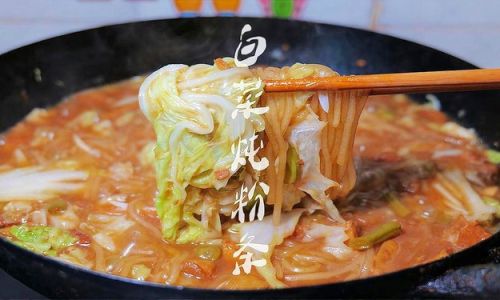
-
Cabbage: Rich in fiber, vitamins C and K, and antioxidants, it supports digestion and immunity.
-
Vermicelli: Low in fat and cholesterol, it’s a gluten-free carbohydrate source.
-
Protein: Lean meats or tofu add essential amino acids without excess saturated fat.
Serving Suggestions: From Solo Meals to Feasts
This stew shines in various settings:
-
Casual Dinners: Pair with steamed rice and a side of pickled vegetables.
-
Potlucks: Serve in a communal bowl with chopsticks and spoons for sharing.
-
Meal Prep: It keeps well in the fridge for 3–4 days, with flavors melding beautifully over time.
Conclusion: The Joy of Slow Cooking
In an era of instant gratification, cabbage stew invites us to slow down. Its preparation is a meditation—chopping vegetables, stirring the pot, and savoring the aroma as it fills the kitchen. Mastering this dish isn’t just about following a recipe; it’s about understanding the alchemy of ingredients and the patience to let them harmonize. Whether you’re feeding a family or seeking solace in a bowl, this stew delivers warmth, flavor, and the timeless joy of homemade food. So grab your wok, sharpen your knife, and embark on a culinary adventure that proves simplicity, when executed with care, is anything but ordinary.




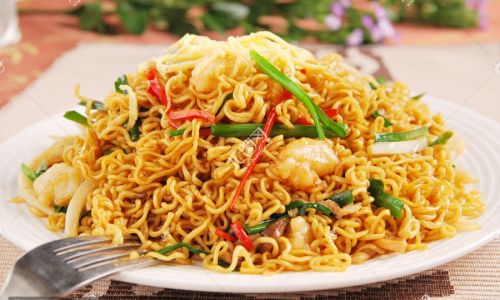

0 comments